Hydroponic lettuce gardening at home might sound like something out of a sci-fi movie, but trust me, it’s easier than you think! Forget battling weeds and soil pests – we’re diving into the world of soilless gardening, where fresh, crisp lettuce is just weeks away, grown right in your own living space.
For centuries, humans have sought innovative ways to cultivate food. While traditional agriculture has deep roots, hydroponics, in its modern form, has gained immense popularity in recent decades. NASA has even explored hydroponics for space travel, envisioning astronauts growing their own food on long missions! But you don’t need a spacesuit to enjoy the benefits.
Why should you try hydroponic lettuce gardening at home? Well, imagine having a constant supply of delicious, pesticide-free lettuce, ready to harvest whenever you need it. No more last-minute grocery store runs for wilted greens! Plus, it’s a fantastic way to reduce your environmental footprint, conserve water, and learn a new skill. This DIY guide will walk you through every step, from choosing the right system to troubleshooting common problems. Get ready to impress your friends and family with your green thumb (even without the soil!).
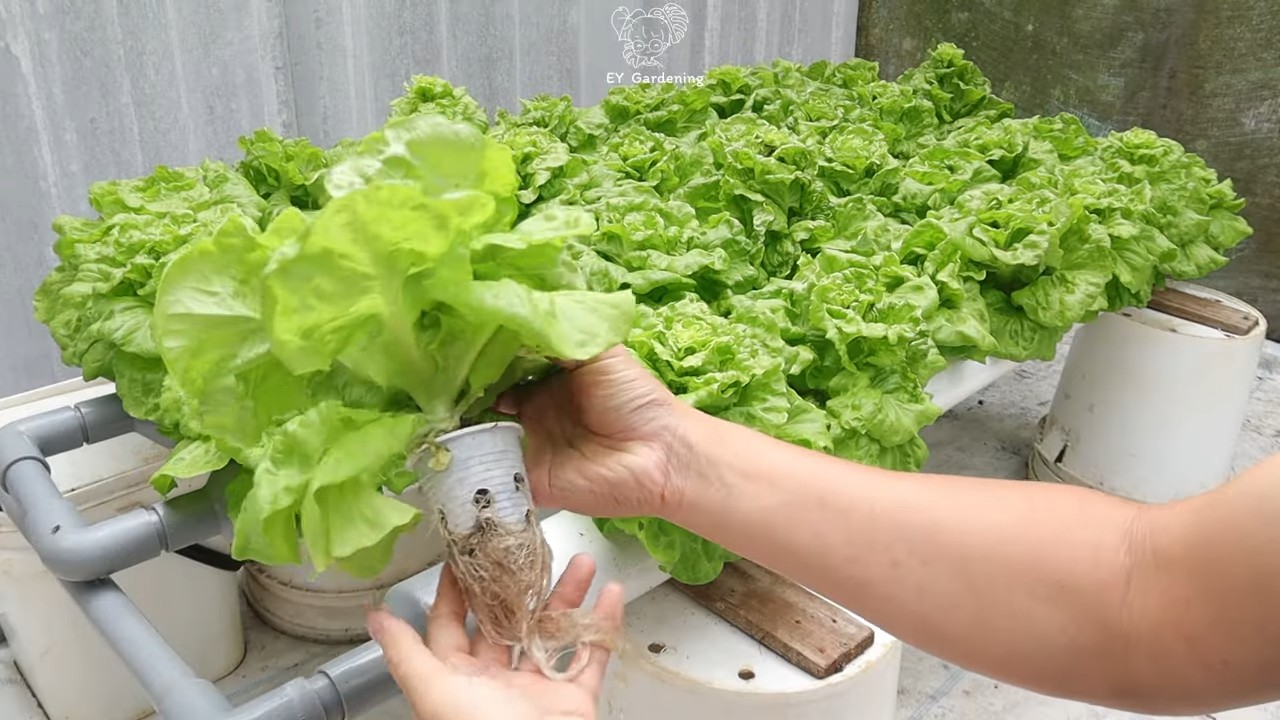
Hydroponischer Salatgarten für Zuhause: Dein DIY-Leitfaden
Hallo liebe Gartenfreunde! Habt ihr Lust auf knackigen, frischen Salat, auch wenn ihr keinen Garten habt? Dann ist hydroponischer Salatgartenbau genau das Richtige für euch! Ich zeige euch, wie ihr ganz einfach zu Hause euren eigenen Salat anbauen könnt, ohne Erde und mit minimalem Aufwand. Keine Angst, es ist einfacher als es klingt!
Was ist Hydroponik überhaupt?
Hydroponik ist im Grunde genommen der Anbau von Pflanzen ohne Erde. Die Pflanzenwurzeln werden stattdessen mit einer Nährlösung versorgt, die alle wichtigen Mineralien und Nährstoffe enthält, die sie zum Wachsen brauchen. Das Ganze findet in Wasser oder einem inerten Medium wie Kokosfasern oder Blähton statt. Der Vorteil? Schnelleres Wachstum, weniger Schädlinge und Krankheiten und natürlich die Möglichkeit, auch auf kleinstem Raum anzubauen.
Warum Salat hydroponisch anbauen?
Salat ist perfekt für den hydroponischen Anbau, weil er schnell wächst und relativ wenig Platz benötigt. Außerdem ist er sehr anpassungsfähig und gedeiht in verschiedenen hydroponischen Systemen. Und das Beste: Ihr habt immer frischen Salat zur Hand, egal ob Sommer oder Winter!
Welches hydroponische System ist das Richtige für mich?
Es gibt verschiedene hydroponische Systeme, aber für den Anfang empfehle ich euch ein einfaches System, das leicht zu bauen und zu warten ist. Hier sind zwei Optionen, die ich euch vorstellen möchte:
* Das Kratky-System: Das ist das einfachste System überhaupt. Die Pflanzenwurzeln hängen in einer Nährlösung, und der Wasserstand wird nach und nach gesenkt, sodass die Wurzeln sowohl Zugang zu Wasser als auch zu Luft haben. Perfekt für Anfänger!
* Das Deep Water Culture (DWC)-System: Hier hängen die Pflanzenwurzeln ebenfalls in einer Nährlösung, aber ein Luftsprudler sorgt für Sauerstoffzufuhr. Das fördert das Wachstum und ist etwas effizienter als das Kratky-System.
Ich werde euch im Folgenden zeigen, wie ihr ein einfaches DWC-System baut. Keine Sorge, es ist wirklich nicht schwer!
Materialliste für dein DIY DWC-System
Bevor wir loslegen, brauchen wir natürlich die richtigen Materialien. Hier ist eine Liste von Dingen, die ihr besorgen müsst:
* Ein Behälter: Ein dunkler Plastikeimer (ca. 10-20 Liter) ist ideal. Dunkel, damit kein Licht an die Nährlösung kommt und Algenwachstum verhindert wird.
* Netztöpfe: Diese halten die Pflanzen und lassen die Wurzeln in die Nährlösung wachsen.
* Hydroton (Blähton): Dient als Wachstumsmedium in den Netztöpfen.
* Luftpumpe und Luftschlauch: Für die Sauerstoffzufuhr in der Nährlösung.
* Luftsprudler: Wird am Ende des Luftschlauchs befestigt und sorgt für feine Luftbläschen.
* Nährlösung für hydroponischen Anbau: Speziell für Salat entwickelt.
* pH-Messgerät und pH-Senker/Heber: Um den pH-Wert der Nährlösung zu kontrollieren und anzupassen.
* EC-Messgerät (optional): Um die Nährstoffkonzentration zu messen.
* Salatsamen oder Jungpflanzen: Je nachdem, was ihr bevorzugt.
* Bohrmaschine und Lochsäge: Um Löcher für die Netztöpfe in den Deckel des Eimers zu bohren.
* Lineal und Stift: Zum Anzeichnen der Löcher.
Schritt-für-Schritt-Anleitung für dein DWC-System
Jetzt geht’s ans Eingemachte! Folgt einfach diesen Schritten, und schon bald habt ihr euer eigenes hydroponisches Salatparadies.
Schritt 1: Den Behälter vorbereiten
1. Reinigung: Reinigt den Eimer gründlich mit Wasser und Seife. Spült ihn danach gut aus, um alle Seifenreste zu entfernen.
2. Löcher bohren: Messt den Durchmesser eurer Netztöpfe und wählt eine passende Lochsäge. Zeichnet mit Lineal und Stift die Positionen der Löcher auf dem Deckel des Eimers an. Achtet darauf, dass genügend Abstand zwischen den Löchern ist, damit die Pflanzen genügend Platz haben. Bohrt die Löcher vorsichtig mit der Bohrmaschine.
3. Deckel anpassen: Setzt die Netztöpfe in die Löcher ein, um sicherzustellen, dass sie gut passen.
Schritt 2: Das Belüftungssystem installieren
1. Luftpumpe platzieren: Stellt die Luftpumpe an einen trockenen Ort in der Nähe des Eimers.
2. Luftschlauch anschließen: Verbindet den Luftschlauch mit der Luftpumpe und dem Luftsprudler.
3. Luftsprudler platzieren: Legt den Luftsprudler auf den Boden des Eimers.
Schritt 3: Die Nährlösung vorbereiten
1. Wasser einfüllen: Füllt den Eimer mit Wasser. Achtet darauf, dass der Wasserstand unterhalb der Netztöpfe bleibt, sodass die Wurzeln nicht vollständig untergetaucht sind.
2. Nährlösung hinzufügen: Gebt die empfohlene Menge an Nährlösung für Salat hinzu. Beachtet die Anweisungen auf der Verpackung.
3. pH-Wert überprüfen und anpassen: Messt den pH-Wert der Nährlösung mit dem pH-Messgerät. Der ideale pH-Wert für Salat liegt zwischen 5,5 und 6,5. Passt den pH-Wert gegebenenfalls mit pH-Senker oder pH-Heber an.
4. EC-Wert messen (optional): Messt den EC-Wert der Nährlösung mit dem EC-Messgerät. Der ideale EC-Wert für Salat liegt zwischen 1,2 und 1,6 mS/cm.
Schritt 4: Die Pflanzen einsetzen
1. Hydroton vorbereiten: Spült den Blähton gründlich aus, um Staub und Schmutz zu entfernen.
2. Netztöpfe befüllen: Füllt die Netztöpfe mit dem Blähton.
3. Pflanzen einsetzen: Setzt die Salatsamen oder Jungpflanzen in die Netztöpfe. Achtet darauf, dass die Wurzeln Kontakt mit der Nährlösung haben. Wenn ihr Samen verwendet, könnt ihr sie auch direkt in den Blähton säen.
4. Netztöpfe platzieren: Setzt die Netztöpfe in die Löcher im Deckel des Eimers ein.
Schritt 5: Licht und Pflege
1. Licht: Salat braucht viel Licht, um zu wachsen. Stellt den Eimer an einen sonnigen Ort oder verwendet eine Pflanzenlampe.
2. Nährlösung überprüfen: Überprüft regelmäßig den Wasserstand und den pH-Wert der Nährlösung. Füllt Wasser und Nährlösung nach Bedarf auf.
3. Nährlösung wechseln: Wechselt die Nährlösung alle 2-3 Wochen komplett aus, um die Ansammlung von Salzen und Nährstoffungleichgewichten zu vermeiden.
4. Schädlinge und Krankheiten: Achtet auf Anzeichen von Schädlingen oder Krankheiten. Bei Bedarf könnt ihr biologische Schädlingsbekämpfungsmittel einsetzen.
Tipps und Tricks für den erfolgreichen hydroponischen Salatanbau
* Die richtige Salatsorte: Nicht alle Salatsorten sind gleich gut für den hydroponischen Anbau geeignet. Blattsalate wie Römersalat, Kopfsalat und Pflücksalat sind besonders empfehlenswert.
* Regelmäßige Kontrolle: Überprüft eure Pflanzen regelmäßig auf Anzeichen von Nährstoffmangel oder Krankheiten.
* Geduld: Hydroponischer Salatanbau ist zwar schneller als der Anbau in Erde, aber es braucht trotzdem Zeit, bis die Pflanzen wachsen. Habt Geduld und gebt nicht auf!
* Experimentieren: Probiert verschiedene Nährlösungen und Anbaumethoden aus, um herauszufinden, was für euch am besten funktioniert.
* Dokumentation: Notiert euch eure Erfahrungen, damit ihr beim nächsten Mal noch besser vorbereitet seid.
Häufige Probleme und Lösungen
* Algenwachstum: Algenwachstum in der Nährlösung kann ein Problem sein. Verwendet einen
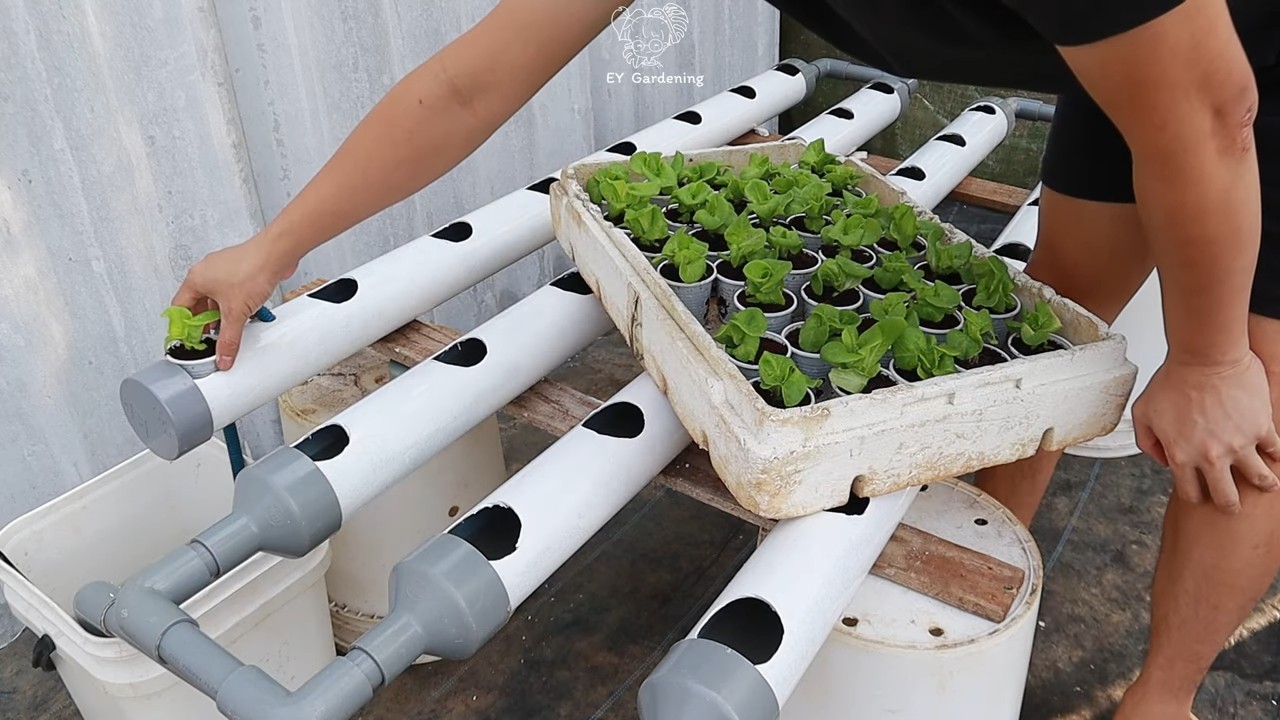
Conclusion
So, there you have it! Embracing hydroponic lettuce gardening at home isn’t just a trendy experiment; it’s a gateway to fresher, healthier, and more sustainable eating. We’ve walked you through the simple steps, demystified the process, and hopefully, ignited a spark of excitement for growing your own leafy greens.
But why is this DIY trick a must-try? Let’s recap. First and foremost, the taste. Imagine biting into crisp, vibrant lettuce that was harvested just moments before. The flavor is unparalleled, far surpassing anything you’ll find on a supermarket shelf. Secondly, control. You dictate the nutrients, the environment, and ultimately, the quality of your lettuce. No more worrying about pesticides or questionable farming practices. You know exactly what you’re putting into your body. Thirdly, convenience. Forget those last-minute grocery store runs for a wilted head of lettuce. With your own hydroponic setup, fresh greens are always at your fingertips. And finally, the sheer satisfaction. There’s something incredibly rewarding about nurturing a plant from seed to harvest, especially when it results in a delicious and nutritious meal.
Ready to take your hydroponic lettuce gardening to the next level? Consider these variations:
* Experiment with different lettuce varieties: Romaine, butterhead, loose-leaf – each offers a unique flavor and texture profile. See which one thrives best in your setup and suits your palate.
* Add companion plants: Herbs like basil, chives, and parsley can be grown alongside your lettuce, creating a mini-ecosystem and enhancing flavors.
* Explore different hydroponic systems: While we focused on a simple Kratky method, there are other options like deep water culture (DWC) and nutrient film technique (NFT) that you can explore as you gain experience.
* Optimize your nutrient solution: Research the specific nutrient requirements of lettuce and adjust your solution accordingly for optimal growth.
But the most important thing is to just start! Don’t be intimidated by the technical jargon or the perceived complexity. Hydroponic lettuce gardening at home is surprisingly accessible, even for beginners. Start small, experiment, and learn as you go. The rewards are well worth the effort.
We’re confident that once you experience the joy of harvesting your own hydroponically grown lettuce, you’ll be hooked. So, grab your supplies, follow our guide, and embark on this exciting journey. And most importantly, we want to hear about your experiences! Share your photos, tips, and challenges in the comments below. Let’s build a community of hydroponic lettuce enthusiasts and inspire others to embrace this sustainable and rewarding practice. Happy growing!
Frequently Asked Questions (FAQ)
What exactly is hydroponics, and is it difficult to learn?
Hydroponics is a method of growing plants without soil, using water-based nutrient solutions. Instead of relying on soil to provide nutrients, the plant roots are submerged in or exposed to a nutrient-rich solution that contains everything they need to thrive. The difficulty level depends on the system you choose. The Kratky method, which we discussed, is one of the simplest and most beginner-friendly hydroponic techniques. It requires minimal equipment and maintenance, making it an excellent starting point for anyone new to hydroponics. While there’s a learning curve involved in understanding nutrient solutions and environmental factors, the basic principles are easy to grasp, and plenty of resources are available online to help you along the way. Don’t be afraid to experiment and learn from your mistakes – that’s part of the fun!
What kind of lettuce grows best hydroponically?
Many lettuce varieties thrive in hydroponic systems. Loose-leaf varieties like Black Seeded Simpson, Red Sails, and Oak Leaf are particularly well-suited because they mature quickly and can be harvested continuously. Butterhead varieties like Buttercrunch and Bibb are also popular choices, offering a delicate flavor and tender texture. Romaine lettuce, known for its crispness and upright growth habit, can also be grown hydroponically, although it may require a slightly larger container and more support. Ultimately, the best lettuce variety for you will depend on your personal preferences and the specific conditions of your hydroponic setup. Experiment with different varieties to see which ones perform best in your environment.
How often do I need to change the nutrient solution?
The frequency of nutrient solution changes depends on several factors, including the size of your container, the type of lettuce you’re growing, and the environmental conditions. In general, it’s recommended to change the nutrient solution every 2-3 weeks, or more frequently if you notice signs of nutrient deficiency or algae growth. Regularly monitor the pH and EC (electrical conductivity) of your solution to ensure that it’s within the optimal range for lettuce growth. A pH of 5.5 to 6.5 and an EC of 1.0 to 2.0 are generally recommended. If you’re using a larger container or growing multiple lettuce plants, you may need to change the solution more frequently.
What kind of lighting is required for hydroponic lettuce?
Lettuce requires adequate light to grow properly. If you’re growing your hydroponic lettuce indoors, you’ll need to provide artificial lighting. Fluorescent lights, LED grow lights, and high-pressure sodium (HPS) lights are all suitable options. LED grow lights are becoming increasingly popular due to their energy efficiency and long lifespan. Aim for at least 14-16 hours of light per day for optimal lettuce growth. The distance between the light source and the plants will depend on the intensity of the light. Generally, you should position the lights close enough to provide adequate illumination but not so close that they burn the leaves.
Can I use tap water for my hydroponic system?
Whether or not you can use tap water depends on its quality. If your tap water is relatively clean and has a pH within the acceptable range (5.5 to 6.5), it may be suitable for hydroponics. However, tap water often contains chlorine, chloramine, and other chemicals that can be harmful to plants. It’s best to test your tap water before using it in your hydroponic system. If it contains high levels of chlorine or other contaminants, you can let it sit out for 24-48 hours to allow the chlorine to evaporate. Alternatively, you can use a water filter to remove impurities. Rainwater is an excellent option for hydroponics, as it’s naturally soft and free of chemicals.
How do I prevent algae growth in my hydroponic system?
Algae growth is a common problem in hydroponic systems, especially those exposed to sunlight. Algae can compete with your lettuce plants for nutrients and oxygen, and it can also clog your system. To prevent algae growth, keep your nutrient solution covered and out of direct sunlight. Use opaque containers to block light from reaching the solution. You can also add a small amount of hydrogen peroxide to your nutrient solution to kill algae. Regularly clean your containers and equipment to remove any algae buildup.
How long does it take to grow hydroponic lettuce?
The time it takes to grow hydroponic lettuce depends on the variety, the growing conditions, and your level of experience. In general, you can expect to harvest your first lettuce leaves within 3-4 weeks of planting. Loose-leaf varieties tend to mature more quickly than head lettuce varieties. Providing optimal lighting, nutrients, and temperature will help to accelerate growth.
What are some common problems I might encounter, and how do I fix them?
Some common problems you might encounter include nutrient deficiencies, pests, and diseases. Nutrient deficiencies can manifest as yellowing leaves, stunted growth, or other abnormalities. To address nutrient deficiencies, adjust your nutrient solution according to the specific needs of your lettuce plants. Pests like aphids, spider mites, and whiteflies can also attack hydroponic lettuce. To control pests, you can use insecticidal soap, neem oil, or other organic pest control methods. Diseases like root rot and powdery mildew can also affect hydroponic lettuce. To prevent diseases, maintain good hygiene, provide adequate ventilation, and avoid overwatering.
Is hydroponic lettuce gardening at home expensive?
The cost of setting up a hydroponic lettuce garden at home can vary depending on the size and complexity of your system. A simple Kratky system can be set up for a relatively low cost, using readily available materials like plastic containers, nutrient solution, and seeds. More advanced systems, such as DWC or NFT, may require a larger initial investment. However, the long-term cost of hydroponic lettuce gardening can be lower than traditional gardening, as you’ll save money on soil, fertilizer, and water.
Where can I find more information and resources on hydroponic lettuce gardening?
There are many excellent resources available online and in libraries to help you learn more about hydroponic lettuce gardening. Search for reputable websites, blogs, and forums dedicated to hydroponics. Look for books and articles that provide detailed information on nutrient solutions, lighting, pest control, and other aspects of hydroponic gardening. You can also join online communities and connect with other hydroponic gardeners to share tips, ask questions, and learn from their experiences.

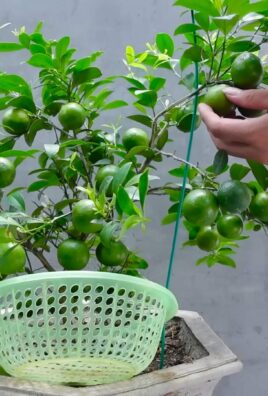
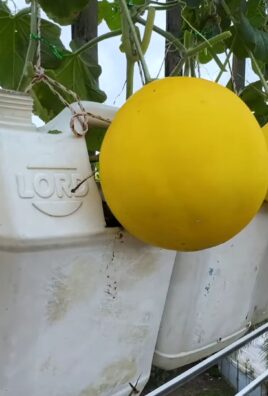
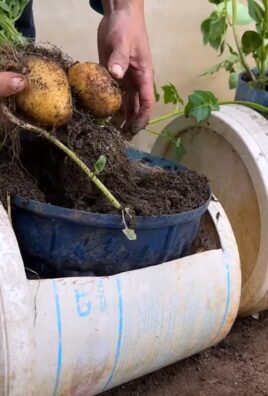
Leave a Comment